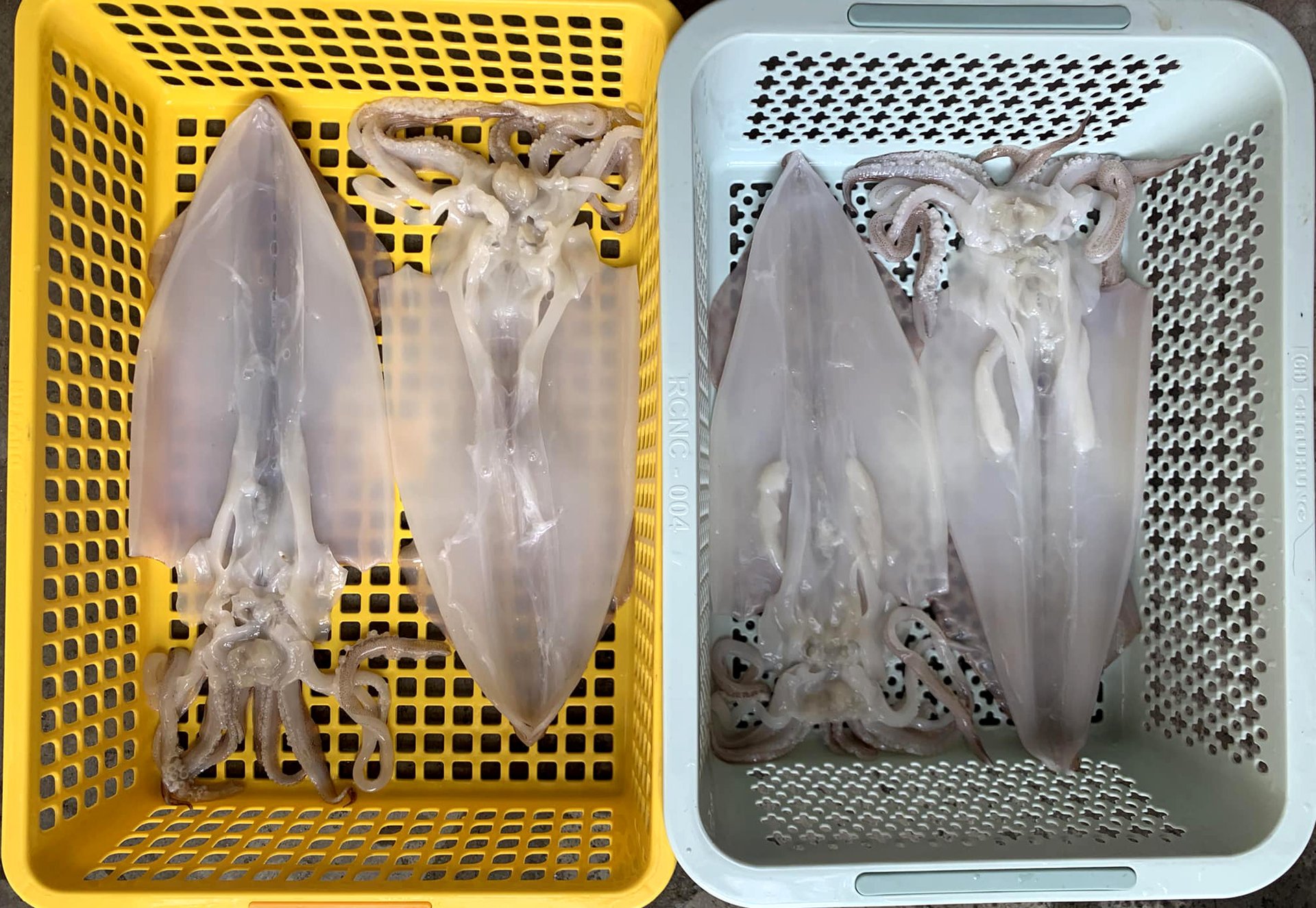November 25, 2025 | 07:21 GMT +7
November 25, 2025 | 07:21 GMT +7
Hotline: 0913.378.918
November 25, 2025 | 07:21 GMT +7
Hotline: 0913.378.918

Fishermen bring tuna ashore in Phu Yen. Photo: Son Trang.
According to Mr. Truong Dinh Hoe, General Secretary of the Vietnam Association of Seafood Exporters and Producers (VASEP), seafood exports to Japan in the first five months of this year reached USD 582 million, down slightly by 9% over the same period in 2022.
During the same period, seafood exports to the US only reached USD 548 million, down 50% compared to the same period last year. Thus, although the two markets suffered the same decrease trend, due to the sharp decrease, the US was no longer the largest market for Vietnamese seafood in the first five months of this year, replaced by Japan.
While other major markets such as the US, China, and the EU all fell sharply, seafood exports to Japan decreased slightly in the first five months of the year, thanks to the growth in exports of seafood products to this market.
Japan is currently Vietnam's largest seafood consumption market, mainly in the marine fish segment. The structure of seafood exports to Japan is leaning more towards seafood products such as squid, scad, pollock, tuna, and garrupa. Of which, a significant amount of raw fish imported from Japan into Vietnam for processing has been exported back to this country. Therefore, in the first quarter of this year, while seafood exports to other major markets such as the US, Korea, China, and the EU all decreased by 6%–45%, seafood exports to Japan increased by 10%.
The growth of seafood exports to Japan partly offsets the sharp decline in shrimp exports. In the first five months of this year, shrimp exports to Japan decreased by 28%. Despite a sharp decrease in imports from Vietnam, the Japanese market still chooses Vietnam as the first shrimp supplier because of its advantages in deep-processed shrimp products that Ecuador and India cannot compete with.
Contrary to shrimp, tuna exports to Japan still have positive growth. After export growth in the fourth quarter of 2022, Vietnam's tuna exports to Japan continued to grow well in the first quarter of 2023. However, the growth rate is also tending to slow down. According to the General Department of Vietnam Customs, tuna export turnover to Japan in the first quarter of 2023 reached nearly USD 8 million, up 29%.

Newly caught squid in Ba Ria - Vung Tau. Photo: Son Trang.
The decrease in fishing production of Japan’s domestic fleet is leading to this country’s increase in fresh and frozen tuna imports from other countries, including Vietnam. In addition, in the first period of 2023, the reactivated tariff preferences under the agreement that Japan offers Vietnam in the Comprehensive and Progressive Agreement for Trans-Pacific Partnership (CPTPP) have been creating an attraction for Vietnamese tuna products.
In the first quarter of this year, Vietnam's exports of tuna products to Japan increased over the same period. Of which, the export value of frozen tuna meat and loin products from Vietnam accounts for the highest proportion (50%) of the total value of tuna exports to this market and increased by 40% over the same period in 2022.
Exports of squid and octopus to Japan are also growing slightly. In the first quarter of 2023, exports of squid and octopus to this market reached USD 37 million, up 4% over the same period in 2022.
Japan's domestic exploitation production of squid and octopus has been decreasing while Japan's demand has increased for instant, convenient squid and octopus products due to modern, busy lifestyles with little cooking time. This is a factor that positively affects Vietnam's exports of squid and octopus to Japan.
The current Vietnam’s export products to Japan mainly include dried squid’s beard, frozen sliced squid, frozen cut cleaned squid, pinecone squid, frozen cuttlefish fillet, frozen cuttlefish, frozen baby cuttlefish, frozen blanched cut octopus, frozen precooked octopus, etc.
The Comprehensive and Progressive Agreement for Trans-Pacific Partnership (CPTPP) entered into force for Vietnam on January 14, 2019. In which CPTPP members commit to eliminating import duties of 97%–100% tariff lines for goods originating from Viet Nam. Most Vietnamese goods, when imported into CPTPP members, will be subject to import duties of 0% immediately when the agreement enters into force. In particular, Japan’s preferential import duty commitment for Vietnam is to eliminate import duties for 86% of tariff lines, which is equivalent to 93.6% of exports from Viet Nam to Japan when the agreement enters into force. Import duties on 90% of tariff lines will be 0% after five years. In this agreement, Japan commits to eliminating import duties for most agricultural and seafood products from Vietnam.
Translated by Huyen Vu Thu

(VAN) An Giang promotes supply-demand connections, standardizes quality and builds value chains, creating a foundation for sustainable bird’s nest development and aiming to expand exports.
/2025/11/24/5339-4-nongnghiep-075331.jpg)
(VAN) Recently, the conference on 'Sustainable Fisheries Linkage Chain - Tilapia for Export' took place in Tien Hai commune, Hung Yen province.
/2025/11/21/4309-2-153400_128.jpg)
(VAN) Green and low-emission rice is paving the way for Vietnamese rice to enter high-end markets, marking the beginning of a transformation journey toward greening and elevating the national rice brand.

(VAN) ‘Right to Win’ outlines a national action plan that shapes a new vision for Viet Nam’s agriculture in an era of renewal and global integration.

(VAN) Lam Dong’s farmed sturgeon output this year is expected to reach 2,300 tons, worth VND 450 billion, affirming the brand’s position on the market.

(VAN) A surge in Ukrainian egg exports, largely driven by soaring sales to the UK over the last few years, has notably pushed up egg prices on the domestic market.

(VAN) The price of Arabica Catimor coffee in Quang Tri is currently at VND 25,000–27,000/kg (fresh cherries), the highest level ever recorded